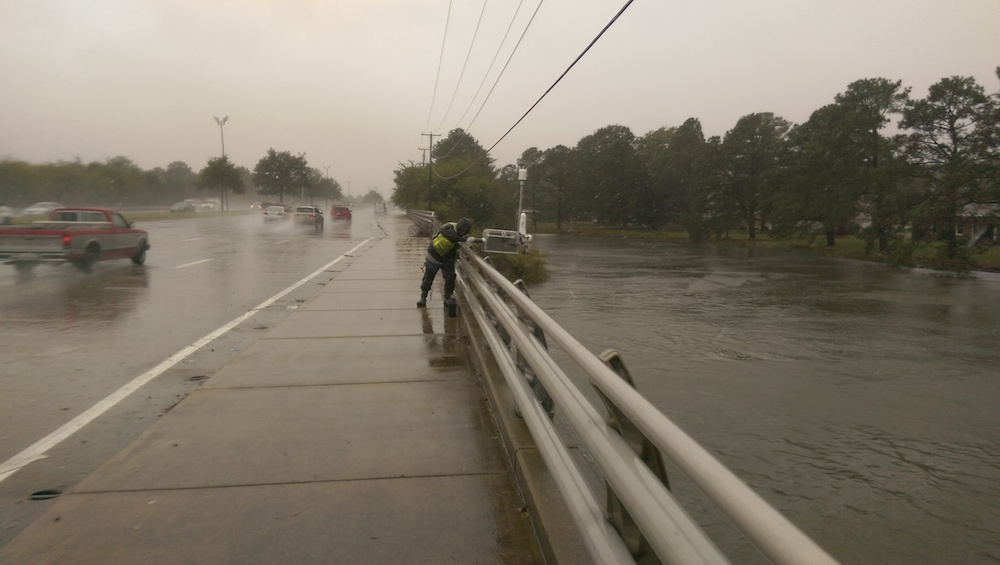
South Carolina is still struggling after massive rainstorm that dumped up to forty percent of the average yearly rainfall in just a few days in some places.
"We are at a 1,000-year level of rain," South Carolina Gov. Nikki Haley said at a news briefing on Sunday (Oct. 4). "That's how big this is."
The inundation left nine people dead and some 40,000 people without safe drinking water in the state, NPR reported.
And though the worst may have passed, more rain is expected to hit the state throughout today, Haley said.
"It's not over. We are in the middle of it. We have at least another 24 hours. There is more rain coming," she said at the news conference.
Epic flooding
The storms in South Carolina dumped up to 20 inches (50.8 centimeters) of rain in some places. The capital city of Columbia received 17 inches (43.2 cm) in 17 hours and experienced its wettest day on record, according to the National Weather Service.
Get the world’s most fascinating discoveries delivered straight to your inbox.
Given that South Carolina typically experiences between 40 and 60 inches (101.6 and 152.4 cm) of rain in a year, that means some regions may have gotten from a third to a forty percent of all their yearly rainfall in just a few days, said Joseph D'Aleo, the chief meteorologist at Weatherbell Analytics, a meteorological consulting firm headquartered in New York City.
The rainfall caused the rivers to swell, with the Congaree River overtopping the levee at the Columbia Canal and contaminating the drinking water supply in Columbia, according to WIS TV. The river was at its highest point since 1936, Haley said at the briefing.
Given where the rains fell, however, much of the water that swelled rivers and streams was headed for the ocean, D'Aleo said.
"Most of the heaviest rains fell on relatively flat land that slopes down toward the coast, and most of it that isn't absorbed by the soil runs off into the rivers and streams and out to sea eventually," D'Aleo said.
Wet front
The cause of the Carolina storms was a moisture-laden cool front that swept down the East Coast over the weekend, D'Aleo said. (Though early weather models predicted that Hurricane Joaquin would batter the East Coast over the weekend, it headed out to sea, missing the U.S. However, some of the moisture from the hurricane may have been pulled into the weather front causing the South Carolina storms, according to CNN.)
After its sojourn over the Carolinas, the wet front is heading west, across Texas and on to California, D'Aleo said.
"Most of the action will be in West Texas and down into Southern California," D'Aleo said.
Some precedent
Though many meteorologists have called the flooding historic, there is some precedent for similar soakers in the last several decades, D'Aleo said. For instance, two hurricanes in 1955 caused similar havoc on the East coast.
"Two hurricanes came ashore in the Carolinas and lost all their strength but dumped a tremendous amount of rain there, and produced very memorable flooding," D'Aleo told Live Science, referring to Hurricane Connie and Diane.
Follow Tia Ghose on Twitter and Google+. Follow Live Science @livescience, Facebook & Google+. Original article on Live Science.

Tia is the editor-in-chief (premium) and was formerly managing editor and senior writer for Live Science. Her work has appeared in Scientific American, Wired.com, Science News and other outlets. She holds a master's degree in bioengineering from the University of Washington, a graduate certificate in science writing from UC Santa Cruz and a bachelor's degree in mechanical engineering from the University of Texas at Austin. Tia was part of a team at the Milwaukee Journal Sentinel that published the Empty Cradles series on preterm births, which won multiple awards, including the 2012 Casey Medal for Meritorious Journalism.


